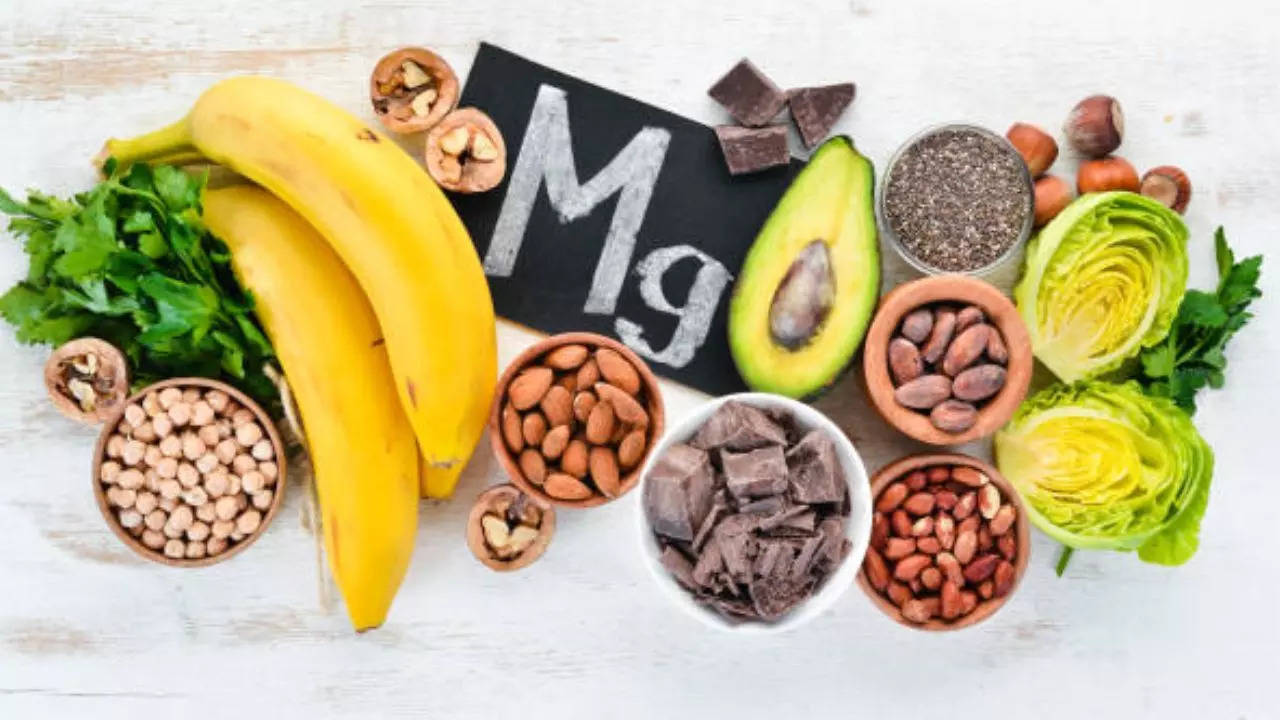Contents
-
news
-
Health
-
Diet
feeling tired? These magnesium-rich foods are all you need
Feeling tired and sluggish? Low magnesium levels may be the culprit. Magnesium-rich foods like spinach, almonds, avocados, and dark chocolate can boost energy, reduce fatigue, and improve overall well-being. Studies show that magnesium supports energy production, muscle function, and better sleep, making it a must-have nutrient for a healthy life.

feeling tired? These magnesium-rich foods are all you need (Image credit: istock)
Do you often feel drained of energy even after a full night’s sleep? This could be a sign that your body is deficient in magnesium, an important mineral responsible for maintaining energy levels, muscle function and overall well-being. Magnesium plays an important role in more than 300 biochemical reactions in the body, including converting food into energy. If you’re feeling tired, add magnesium rich foods This may just be the solution to your diet that you need.
Why is magnesium important for energy?
Magnesium is essential for the production of adenosine triphosphate (ATP), the molecule that provides energy to your cells. Without enough magnesium, your body struggles to generate the energy needed for daily activities, leaving you feeling sluggish and tired. Additionally, magnesium helps regulate muscle contraction, nerve function and blood sugar levels – all of which contribute to sustained energy.
A study published in the journal Nutrients (2018) shows the link between magnesium deficiency And chronic fatigue. The study found that low magnesium levels are linked to poor energy production and increased oxidative stress, which can increase feelings of fatigue. Another study in the Journal of Clinical Sleep Medicine (2012) showed that magnesium supplementation improved sleep quality in older adults, further emphasizing its role in reducing fatigue.
According to the National Institutes of Health (NIH), adult men need 400–420 mg of magnesium daily, while women need 310–320 mg. Unfortunately, studies indicate that approximately half of the US population consumes less magnesium than the recommended daily intake, potentially leading to deficiency symptoms such as fatigue, muscle cramps, irritability and poor concentration.
To combat fatigue and increase your energy levels, here are some magnesium-rich foods you should consider adding to your diet.
Top Magnesium Rich Foods for Energy
1. spinach
Dark, leafy greens like spinach are a powerhouse of magnesium. One cup of cooked spinach provides about 157 milligrams of magnesium — 40 percent of the daily requirement. Spinach also contains iron and vitamin C, which can combat fatigue by improving oxygen transport in the body.
2. Almond
A handful of almonds (about 1 ounce) contains 76 milligrams of magnesium. These nutrient-packed nuts are also rich in healthy fats and proteins, providing a sustained energy boost throughout the day. Research in the British Journal of Nutrition (2016) suggested that almond consumption could improve energy metabolism and reduce hunger pangs.
3. Avocado
A single avocado contains about 58 milligrams of magnesium, along with potassium, fiber, and healthy fats. A study in the journal Nutrients (2019) linked avocado consumption to better nutrient absorption and improved energy levels.
4. pumpkin seeds
Pumpkin seeds are one of the richest sources of magnesium, providing 150 milligrams per ounce. They also supply zinc and omega-3 fatty acids, which help reduce inflammation and improve mental clarity.
5. dark chocolate
One ounce of dark chocolate contains about 64 milligrams of magnesium. According to a study published in Frontiers in Nutrition (2020), dark chocolate may enhance mood and reduce stress, contributing to a greater feeling of energy and focus.
6. bananas
Known for their potassium content, bananas also offer a good amount of magnesium (32 mg per medium-sized banana). Combined with natural sugars and fiber, bananas are a perfect pre-workout snack for a quick energy boost.
7. quinoa
This gluten-free grain is not only high in protein, but also provides 118 milligrams of magnesium per cup when cooked. Quinoa is a versatile ingredient that can be added to salads, soups, or served as a side dish.
8. Curd
One cup of plain, low-fat yogurt delivers about 42 milligrams of magnesium. It also contains probiotics, which improve gut health and aid in better nutrient absorption.
Tips to Maximize Magnesium Absorption
– Pair with Vitamin D: Magnesium absorption is improved when combined with vitamin D, found in fatty fish, eggs and exposure to sunlight.
– Limit processed foods: Highly processed foods are often low in magnesium and can hinder absorption.
– Hydrate well: Dehydration can lower magnesium levels, so drink plenty of water throughout the day.
Feeling tired doesn’t always mean you need more coffee or sugar — it could be your body’s way of asking for more magnesium. Studies have repeatedly shown that magnesium-rich foods can increase energy production, improve sleep quality, and reduce stress, making you feel more energetic throughout the day.
Start small by adding spinach salad, snacking on almonds, or enjoying some dark chocolate and feel the difference in terms of your energy.
Get the latest news now on diet, health and more including breaking news and top headlines from around the world.
magnesium deficiency


